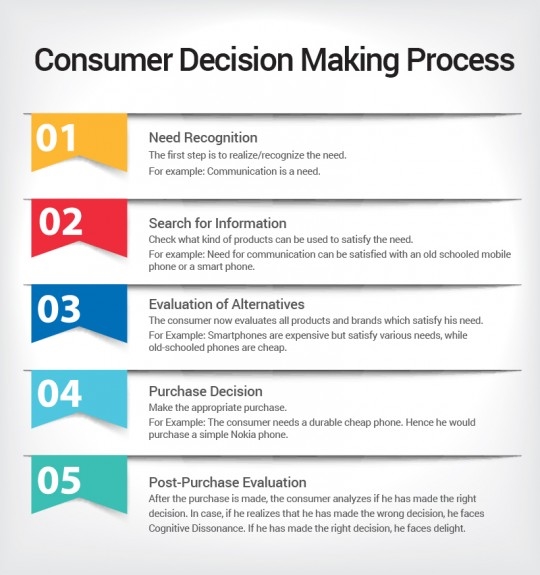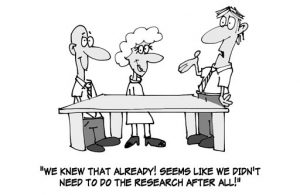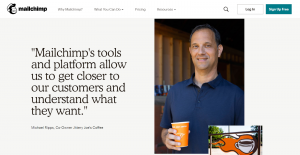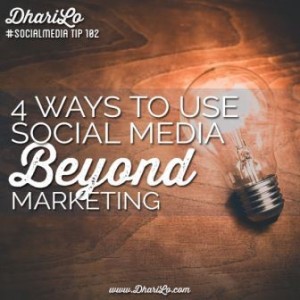— June 28, 2017
In general, rational purchases are made for products which require in-depth research, information and more extensive knowledge. Oftentimes, the products require higher expenses and a deeper level of dedication.
A car, for example, is not purchased without comparing different models beforehand, and running shoes have to fit the need of the consumer (beginner or advanced level?), as these are products which are used over a longer period of time, require spending a higher amount of money and need to perform well to satisfy the consumer’s needs. Therefore, these purchases are not at all based on impulses and cannot be triggered as easily as emotional purchases can be.
LED BY EMOTIONS – BUT WE DENY IT!
An interesting point regarding emotional and rational purchases is that although we are oftentimes adamant that we made a rational decision, we are led by emotions more often than not.
“In our society, it is generally not considered justifiable to make a decision purely on an emotional response […] We want to be considered scientific and rational, so we come up with reasons after the fact to justify our choice.”
EMOTIONAL VS RATIONAL TRIGGERS ON DIFFERENT PLATFORMS
As a channel with a strong emphasis on inspiration, Instagram works extremely well for emotional purchases. Most Instagram influencer channels are build up on emotions: The influencers tell a story, let their followers know which products they use, the kind of food they like, where they travel and who their friends are. Thus, the platform puts itself forward for triggering emotional purchases.
Due to its inspirational rather than informational character, Instagram will not trigger the purchase of long-term and expensive products which would require extensive research prior to the purchase, like cars. Nonetheless, the platform is still valuable for automotive brands in terms of awareness and branding. But you will probably not buy a car based on an Instagram posting alone.
YOUTUBE
On YouTube, both emotional and rational approaches are present. The video platform offers inspiration, for example by influencers who purely present products in video hauls. But on the other hand, due to the possibility of uploading longer videos, topics can be explained in more detail, devices are put to the test, ingredients and effects of products are examined. In this regard, YouTube offers its users a combination of emotional as well as rational experiences.
BLOGS
Blogs have an informational character. Oftentimes, they serve as an additional platform for knowledge transfer. Similar to YouTube, blogs profit from their length: Products can be displayed on Instagram initially and described in detail on the blog as an additional source of information.
Blogs are particularly interesting for those consumers who have a deeper interest in a topic and are looking for in-depth knowledge regarding this topic. The simple display of a product on Instagram does not satisfy the needs of this consumer. Thus, rational factors outweigh emotional ones.
EMOTIONAL OR RATIONAL: WHICH APPROACH WORKS BEST FOR COMPANIES?
Although we might consider ourselves as making purely rational decisions, we make purchases for emotional reasons frequently. This behavior can be impacted by the brands themselves as well as their advocates.
To market successfully, brands need to be aware of their identity. Zalando and Amazon, for example, focus on a rather rational approach. They hold numerous brands, several product categories with thousands of products each, various prices and product information. To find a special product, consumers have to spend time on the sites and search through the product range. These companies put their focus on an informational, rational approach.
In comparison to Zalando and Amazon, the brand Sugarbearhair uses a strong emotional approach. The site is easily accessible and offers a very limited amount of products, compact product information and a fixed price for each product. By offering only one product, the consumer does not have the option of evaluating alternatives. This guarantees that consumers will find their way to the desired product (and the check out) rapidly without any obstacles preventing the purchase.
The Tale of the Two Chickens definitely shows that people are oftentimes more emotionally driven than they would like to think, or, as Baba Shiv, Professor of Marketing, puts it:
“The rational brain is great at rationalizing what the emotional brain has already decided.”
Apple, for example, is a brand which sells technology products – a category, which is placed at the rational end of the spectrum. But nonetheless, the brand uses a highly emotional approach and aims at building relationships between the customer and the products. The brand’s advertisements alone are full of emotional triggers.
HOW INFLUENCERS IMPACT PURCHASING DECISIONS
How does influencer marketing come into play?
Influencers have one distinct advantage over companies: They are consumers themselves. As members of brand’s target groups, we know that brands will put their products first and highlight the advantages rather than the disadvantages of their products.
From influencers (in the sense of brand advocates rather than paid cooperations), the consumer expects an authentic and honest opinion and a personal recommendation of a product or a brand. We as consumers trust an influencer because we feel a connection of any kind towards the influencer: Sympathy, accessibility, a potential of identification or we even award the influencer a certain level of expertise.
Due to their advantage of trust and authenticity, influencers can trigger emotional purchase decisions for products from the rational spectrum as well. Huawei recently launched an influencer campaign in Germany which featured several influencers from the fashion, travel, and food sector. With the hashtag #showwhatyoulove, the campaign aimed at highlighting experiences and moments captured with the new Huawei P10 smartphone.
THE TAKEAWAY
We do not want to admit it, but our emotions play an important role regarding our decision-making process. Nonetheless, we need rational triggers to satisfy our needs as well. Instead of just aiming for a purely rational or exclusively emotional strategy, a good mix of logic and emotions can be more beneficial.
Consumers are oversaturated by regular advertising approaches of brands and companies nowadays. Unoriginal commercials which do not touch the consumer emotionally will quickly get lost in the shuffle. For this reason, influencers can support brands in transmitting a more emotional message than the brand is able to transmit itself as an institution. In the end, a consumer will rather buy a product of a brand he likes than of a brand he has no emotional relation to. So for brands, it is essential to build up this relationship and establish an emotional attachment towards the consumer.
In the end, the consumer will rather buy a product of a brand he or she likes than of a brand the consumer has no emotional relation to. So for brands, it is essential to build up this relationship and establish an emotional attachment towards the consumer.
_____________________________
Published originally on InfluencerDB | Influencer Marketing For Professionals
Digital & Social Articles on Business 2 Community
(159)
Report Post








